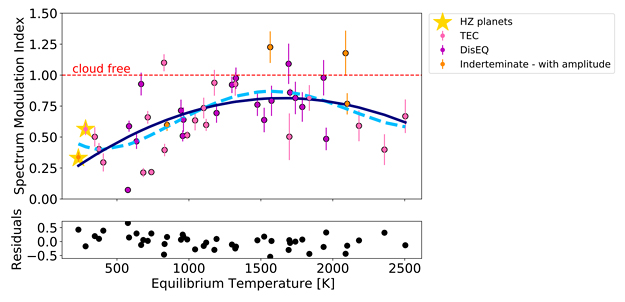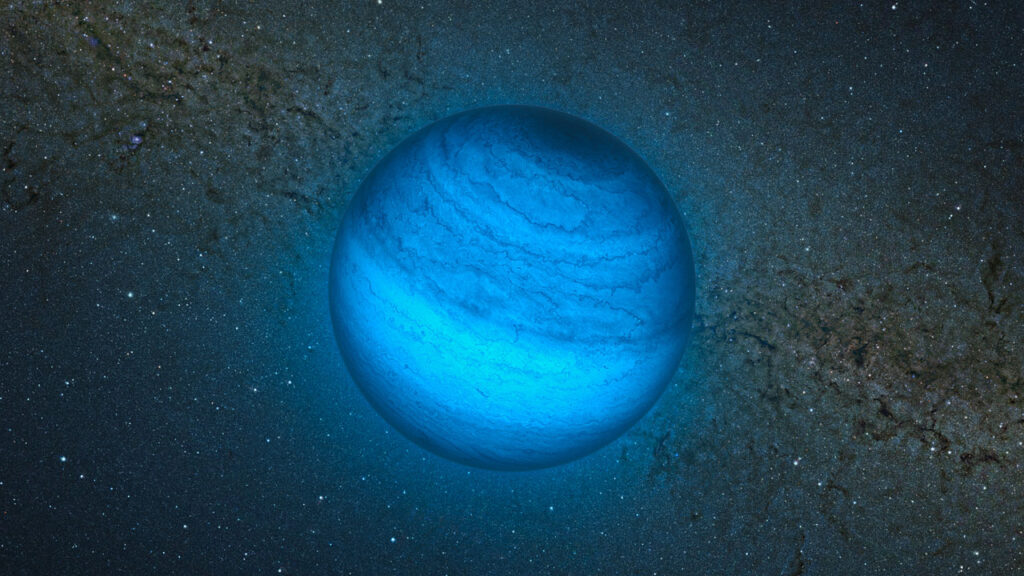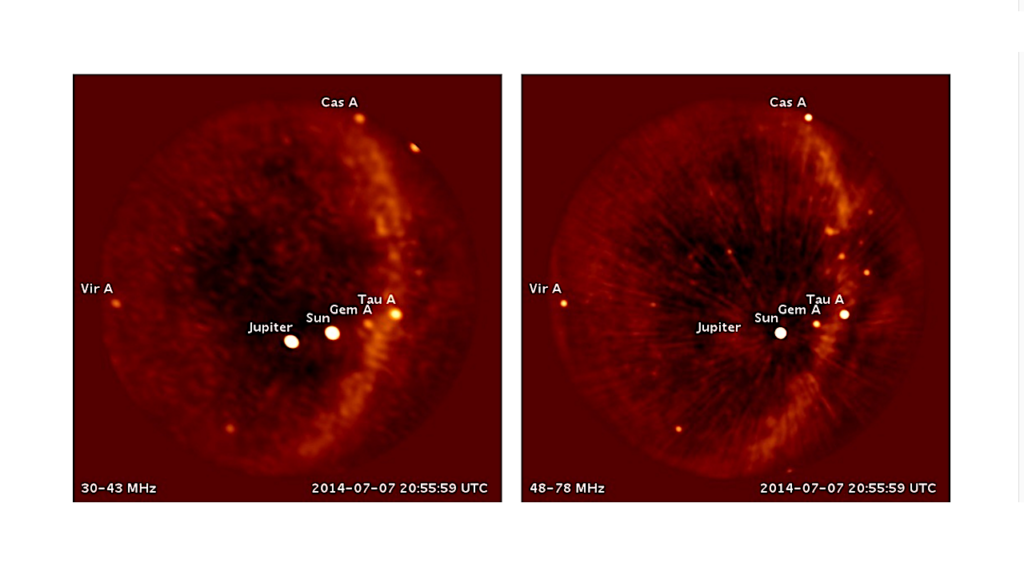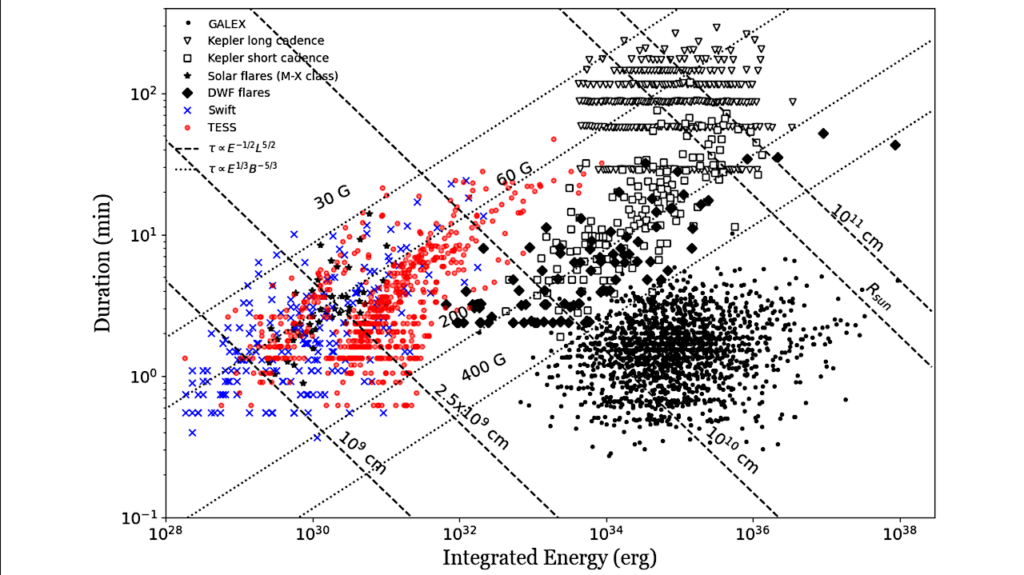A Temperature Trend For Clouds And Hazes In Exoplanets Atmospheres

The transmission spectra of exoplanet atmospheres observed with the Hubble Space Telescope in the near-infrared range (1.1-1.65μm) frequently show evidence for some combination of clouds and hazes.
Identification of systematic trends in exoplanet clouds and hazes is potentially important for understanding atmospheric composition and temperature structure. Here we report on the analysis of spectral modulation using the largest uniformly processed sample of exoplanet transit spectra currently available.
The spectral retrieval includes the capability to detect and represent atmospheres in which the composition departs from thermochemical equilibrium. Using this catalog, we find that the impact of clouds/hazes, measured in terms of damping of spectral features, follows a trend from mostly cloudy/hazy around 500K to mostly clear around 1650K. For planets at lower temperatures (< 270K), we observe a potential rise towards reduced cloudy/hazy atmospheres.
We also find that a partially transparent aerosol component is frequently present and that it is typically vertically distributed throughout the atmospheric column. Our findings also suggest that while clouds and hazes are common in exoplanet atmospheres, the majority of planets have detectable spectral modulation that is sufficient for characterizing their atmospheres.
Additionally, the empirical trend that clouds and hazes are minimized at 1650+874−620K revealed in our catalog has predictive utility for modelling the performance of large-scale transiting exoplanets survey, such as planned with the Ariel mission. This trend can also be used for making a probability-based forecast of spectral modulation for a given source in the context of future JWST observations.
Raissa Estrela, Mark Swain, Gael Roudier
Comments: 11 pages, 3 figures, submitted to ApjL
Subjects: Earth and Planetary Astrophysics (astro-ph.EP)
Cite as: arXiv:2206.09934 [astro-ph.EP] (or arXiv:2206.09934v1 [astro-ph.EP] for this version)
Submission history
From: Raissa Estrela
[v1] Mon, 20 Jun 2022 18:00:07 UTC (3,461 KB)
https://arxiv.org/abs/2206.09934
Astrobiology,








